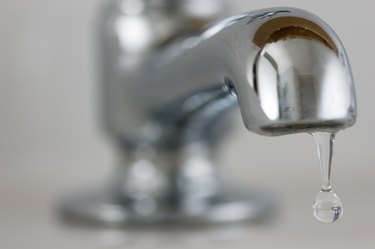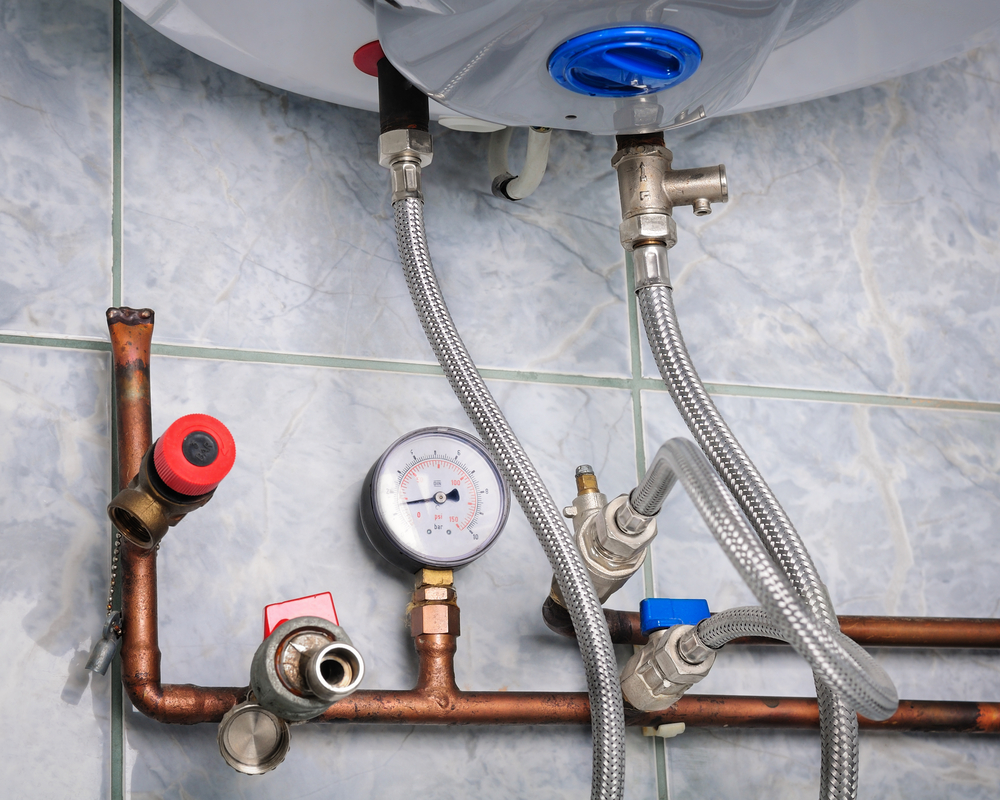What're your thoughts and feelings on Dealing with Low Water Pressure in Your Home?

Low tide stress in your home can be a discouraging problem, influencing every little thing from showering to cleaning dishes. If you're experiencing weak water circulation, there are a number of possible causes and solutions to check out. In this guide, we'll discuss typical reasons for low water stress and practical steps to deal with the problem properly.
Intro to Low Water Stress
Low tide stress happens when the circulation of water from your taps, showers, and other fixtures is weak than common. This can make daily jobs more challenging and much less effective. Comprehending the root causes of low water pressure is crucial to locating the appropriate remedy.
Typical Sources Of Low Tide Pressure
Pipe Obstructions
Gradually, pipelines can come to be obstructed with natural resource, debris, or debris, limiting the flow of water. This is an usual issue in older homes with galvanized steel pipelines.
Deterioration
Rust within pipelines can bring about leaks and reduced water pressure. Corrosion buildup can tighten water circulation, especially in maturing plumbing systems.
Faulty Pressure Regulators
Stress regulatory authorities are in charge of maintaining consistent water pressure in your home. If they malfunction, it can result in low tide stress or uneven flow throughout your home.
Metropolitan Water Supply Issues
Occasionally, the trouble exists outside your home. Community water supply problems, such as main line leakages or maintenance work, can momentarily decrease water stress in your location.
Just How to Identify Low Water Stress
Inspecting Taps and Components
Begin by testing the water stress at various faucets and components throughout your home. If the issue is separated to certain areas, it may suggest local problems.
Evaluating Pipelines
Check visible pipelines for signs of leaks, rust, or clogs. Take note of any unusual sounds, such as knocking or rattling pipes, which might show issues within the plumbing system.
Consulting with a Plumber
If you're not able to pinpoint the reason for low water pressure, consider hiring a professional plumber to conduct a comprehensive inspection. They can recognize underlying concerns and advise appropriate solutions.
Do It Yourself Solutions to Repair Low Tide Pressure
Cleaning Up Aerators and Showerheads
Mineral deposits can collect in aerators and showerheads, lowering water flow. Get rid of and cleanse these components frequently to improve water pressure.
Flushing Hot Water Heater
Debris build-up in the hot water heater can restrict circulation and lower efficiency. Flushing the container periodically assists remove sediment and keep optimal efficiency.
Examining Stress Regulator
Make certain that the pressure regulator is functioning properly. Readjusting or replacing the regulatory authority can aid recover correct water stress throughout your home.
Cleaning Clogs in Pipes
For minor obstructions, attempt making use of a plumbing snake or chemical drainpipe cleaner to clear obstructions in pipelines. Be cautious when making use of chemicals and comply with security guidelines.
When to Call a Professional Plumber
If DIY efforts stop working to resolve the problem or if you suspect considerable plumbing issues, it's best to seek help from an accredited plumber. They have the competence and devices to resolve intricate problems safely and properly.
Safety Nets to Keep Water Pressure
Regular Maintenance
Arrange routine upkeep for your plumbing system to prevent concerns such as deterioration, leaks, and blockages. Addressing small issues early can help stay clear of even more significant repairs later.
Mounting a Stress Booster
Consider mounting a pressure booster pump to boost water pressure in areas with continually reduced flow. This can be especially beneficial for multi-story homes or buildings with high-demand fixtures.
Surveillance Water Usage
Be mindful of water use practices and stay clear of overtaxing the plumbing system. Basic changes, such as shocking showers and washing lots, can assist preserve appropriate water pressure.
Conclusion
Handling low water stress can be discouraging, however determining the underlying causes and applying suitable remedies can bring back optimum circulation throughout your home. Whether it's cleansing aerators, examining pipelines, or consulting with a plumber, taking positive actions can guarantee a consistent supply of water for your daily requirements.
FOUR WAYS TO FIX LOW WATER PRESSURE NOW
Turning on a shower or faucet only to find the water comes out in a sad, slow drizzle is never a good feeling. How exactly are you supposed to wash a pan or take a quick shower when it takes 10 minutes just to rinse off a little soap? The good news is that when your water pressure is bad, there's always a cause: typically one that can be easily fixed. Here are some of the most common causes of low pressure and what you can do to fix the issue:
DEBRIS AND MINERAL DEPOSIT BUILDUPS
If you notice low water pressure from just one or two of the fixtures in your house, the problem likely has to do with debris buildup. Water is full of minerals and other debris, all of which can accumulate in your pipes and on your fixtures. This can cause a blockage that affects how much water flows through. To fix this, try filling a small plastic bag with white vinegar, and use a rubber band to hang it around your showerhead or faucet. Let the head of the fixture soak for a few hours, and the vinegar should loosen the deposits.
WATER LEAKS
Leaks are another common cause of low water pressure. If water is flowing out of your plumbing through a hole or crack before it can reach your fixture, the pressure coming out of the faucet or showerhead will be lower. A plumbing professional is your best bet for finding and repairing a leak in your water supply pipes.
Leaks are another common cause of low water pressure. If water is flowing out of your plumbing through a hole or crack before it can reach your fixture, the pressure coming out of the faucet or showerhead will be lower. A plumbing professional is your best bet for finding and repairing a leak in your water supply pipes.
FOUR WAYS TO FIX LOW WATER PRESSURE NOW
Turning on a shower or faucet only to find the water comes out in a sad, slow drizzle is never a good feeling. How exactly are you supposed to wash a pan or take a quick shower when it takes 10 minutes just to rinse off a little soap? The good news is that when your water pressure is bad, there's always a cause: typically one that can be easily fixed. Here are some of the most common causes of low pressure and what you can do to fix the issue:
DEBRIS AND MINERAL DEPOSIT BUILDUPS
If you notice low water pressure from just one or two of the fixtures in your house, the problem likely has to do with debris buildup. Water is full of minerals and other debris, all of which can accumulate in your pipes and on your fixtures. This can cause a blockage that affects how much water flows through. To fix this, try filling a small plastic bag with white vinegar, and use a rubber band to hang it around your showerhead or faucet. Let the head of the fixture soak for a few hours, and the vinegar should loosen the deposits.
WATER LEAKS
Leaks are another common cause of low water pressure. If water is flowing out of your plumbing through a hole or crack before it can reach your fixture, the pressure coming out of the faucet or showerhead will be lower. A plumbing professional is your best bet for finding and repairing a leak in your water supply pipes.
Leaks are another common cause of low water pressure. If water is flowing out of your plumbing through a hole or crack before it can reach your fixture, the pressure coming out of the faucet or showerhead will be lower. A plumbing professional is your best bet for finding and repairing a leak in your water supply pipes.
A VALVE ISSUE
If you have low water pressure throughout your home, check your main shut-off valve to make sure it's completely open. You may also want to see if there's a pressure-reducing valve installed. If there is, have a plumber help you adjust the settings to get the pressure you're looking for.
OTHERS USING WATER
Believe it or not, your low water pressure could be caused by your neighbors. If you notice low pressure at certain times of day, it may be because you and the people living next to you have similar schedules - when everyone is showering at the same time, the pressure will be lower in every home. Low pressure throughout the neighborhood may also be caused by an issue with your municipal water supply. If that's the case, call the supplier to see if they're working on the issue.
https://www.rotorooter.com/blog/water-leaking/low-water-pressure-fixes/

We were made aware of that write-up on 9 Reasons for Low Water Pressure in Your House from an acquaintance on another blog. Sharing is good. You just don't know, you may very well be doing someone a favor. Thanks for taking the time to read it.
Call